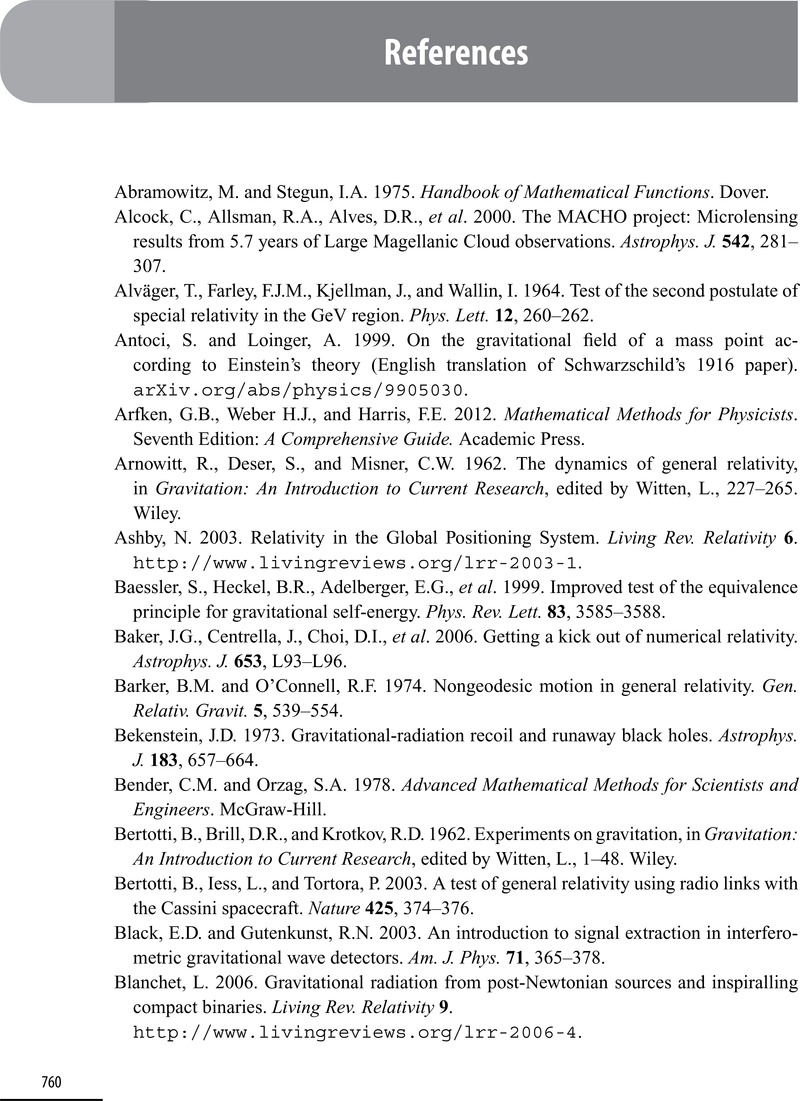Book contents
- Frontmatter
- Contents
- List of boxes
- Preface
- 1 Foundations of Newtonian gravity
- 2 Structure of self-gravitating bodies
- 3 Newtonian orbital dynamics
- 4 Minkowski spacetime
- 5 Curved spacetime
- 6 Post-Minkowskian theory: Formulation
- 7 Post-Minkowskian theory: Implementation
- 8 Post-Newtonian theory: Fundamentals
- 9 Post-Newtonian theory: System of isolated bodies
- 10 Post-Newtonian celestial mechanics, astrometry and navigation
- 11 Gravitational waves
- 12 Radiative losses and radiation reaction
- 13 Alternative theories of gravity
- References
- Index
- References
References
Published online by Cambridge University Press: 05 June 2014
- Frontmatter
- Contents
- List of boxes
- Preface
- 1 Foundations of Newtonian gravity
- 2 Structure of self-gravitating bodies
- 3 Newtonian orbital dynamics
- 4 Minkowski spacetime
- 5 Curved spacetime
- 6 Post-Minkowskian theory: Formulation
- 7 Post-Minkowskian theory: Implementation
- 8 Post-Newtonian theory: Fundamentals
- 9 Post-Newtonian theory: System of isolated bodies
- 10 Post-Newtonian celestial mechanics, astrometry and navigation
- 11 Gravitational waves
- 12 Radiative losses and radiation reaction
- 13 Alternative theories of gravity
- References
- Index
- References
Summary

- Type
- Chapter
- Information
- GravityNewtonian, Post-Newtonian, Relativistic, pp. 760 - 770Publisher: Cambridge University PressPrint publication year: 2014



